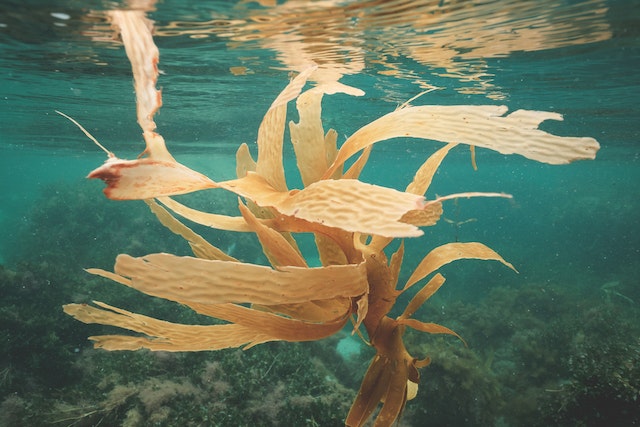Australia seaweed farmers aim to produce $100 million worth of the product within years but complain regulations are holding them back.
Jo Kelly from the Australian Seaweed Industry concedes Australia will miss its 2025 production targets by a considerable margin.
The industry is valued at about $3 million.
Ms Kelly told a recent aquaculture and agriculture conference there was still a lot of work to do.
“Based on what I know about lease areas that have been approved and companies raising capital, we’re still probably five years away,” she said.
The industry is still in its infancy so data is hard to come by, making it difficult to get a complete picture.
Tassal remains the biggest producer of seaweed in Australia, harvesting 2500 tonnes last year.
But that’s a drop in the ocean compared to the 35 million tonnes produced globally each year.
“There’s a huge industry opportunity here some of which we haven’t even discovered yet,” Ms Kelly told AAP.
In the longer term, the Australian industry has set itself an even more lofty goal of matching South Korea’s seaweed production by turning over $1.5 billion a year.
Beyond the deadlines and dollar figures, the industry also aims to reduce Australia’s carbon emissions by feeding seaweed to cattle and sheep.
It’s estimated feeding the red seaweed asparagopsis to livestock could slash methane emissions by more than 80 per cent.
“We believe we can do it,” Ms Kelly said.
“We’re working with a whole range of companies and more are joining all the time.”
Ms Kelly said she was approached weekly by people wanting to grow seaweed, but regulatory hurdles were stifling progress.
“State governments control the aquaculture policy across Australia at the moment so we’ve got seven different regimes all at varying degrees of embracing seaweed,” she said.
Australian company Auskelp wants to open the country’s first commercial golden kelp seaweed farm on the far south coast of NSW.
But after three years of planning and lab work, founder Chris Ride still doesn’t know whether the project is viable.
The company’s first test lines will go into the water next month.
“Everyone is banging on about being one of the great opportunities for Australian coastal communities and for the environment,” he said.
“It’s very frustrating, the industry is stalled.”
His trial sites would see the kelp grown along five metre long lines, on an existing mussel lease.
“We didn’t understand how complex the regulatory approval process was,” he said.
Seaweed farming is treated as a state-significant project in NSW, meaning it goes through the same environmental processes as a coal mine would.
Mr Ride said the company spent $1 million gearing up for the trials, with half of that on approvals.
“There needs to be more action and less talk from politicians in NSW on seaweed’s testing, pilot trials and licenses,” he said.
Seaweed expert Nick Paul said there was very little research available on the environmental impact of seaweed farming in Australia.
“Because it’s a new industry, we can’t have a false start. It’s so important that the first effort is done very thoroughly,” he said.
The Sunshine Coast University professor has been researching seaweed for 25 years and recently cracked the genomic code for asparagopsis.
Farming it and other seaweeds at scale has still not been fully investigated in Australia and university researchers are doing just that.
But Professor Paul said based on progress to date, the industry goal of creating a $100 million industry by 2025 needed to be re-evaluated.
Liv Casben
(Australian Associated Press)





